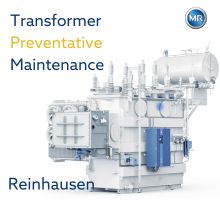U. S. Steel Sees NGO Line Start in 2023, Record Q1 Results
05/02/2022 - United States Steel Corporation’s planned electrical steel line is on schedule and already is generating interest among customers, chief executive David Burritt has said.
“Our close relationships with OEMs have us eager and strongly convinced that the thinner and wider (non-grain-oriented) electrical steels that will be made at Big River Steel will capture customers' demand because we know where they are headed. Customers are already reserving their time on the new world-class NGO line, construction of which is on time and on budget for a third quarter 2023 start-up,” he said during the company’s first quarter earnings call last week.
The company revealed plans for the 200,000-ton line last year. A US$450 million investment, the line is meant to meet rising demand from electric vehicle manufacturers.
On the quarter, U. S. Steel posted net earnings of US$882 million, or US$3.02 per diluted share, on net sales of US$5.2 billion. For comparison, the company reported earnings of US$91 million, or US$0.35 per diluted share, on net sales of US$3.7 billion in the same quarter last year.
U. S. Steel said it was its best first quarter ever and attributed the results in part to higher average selling prices in the U.S. and Europe.
"The team’s stellar performance drove our best-ever first-quarter results, despite the challenging global dynamics that emerged throughout the quarter," Burritt said.
Looking forward, the company said it expects to see record results in the second quarter, too.
"Our first-quarter performance is just the start of what is expected to be another exceptional year for U.S. Steel. In the second quarter, our flat-rolled segment should see the largest increase in our portfolio in EBITDA versus the first quarter. Higher spot selling prices and increased demand, fixed cost for iron ore and coal, and the absence of iron ore mining seasonality should all contribute to meaningful quarter-over-quarter EBITDA improvement," said chief financial officer Christine S. Breves.
"Our mini-mill segment is also expected to capture higher volumes and higher selling prices. We project higher raw material costs to largely offset the expected commercial tailwinds," she added.



-(220-x-200-px)-(130-x-130-px)-(220-x-200-px).jpg?lang=en-US&ext=.jpg)
Veolia.gif?width=200&height=200&mediaprotectionhash=4deca34a0d5a00013b5a0ccdc2dcf98fd2c17aabb57eb7bbb27200552f29c247&ext=.gif)





